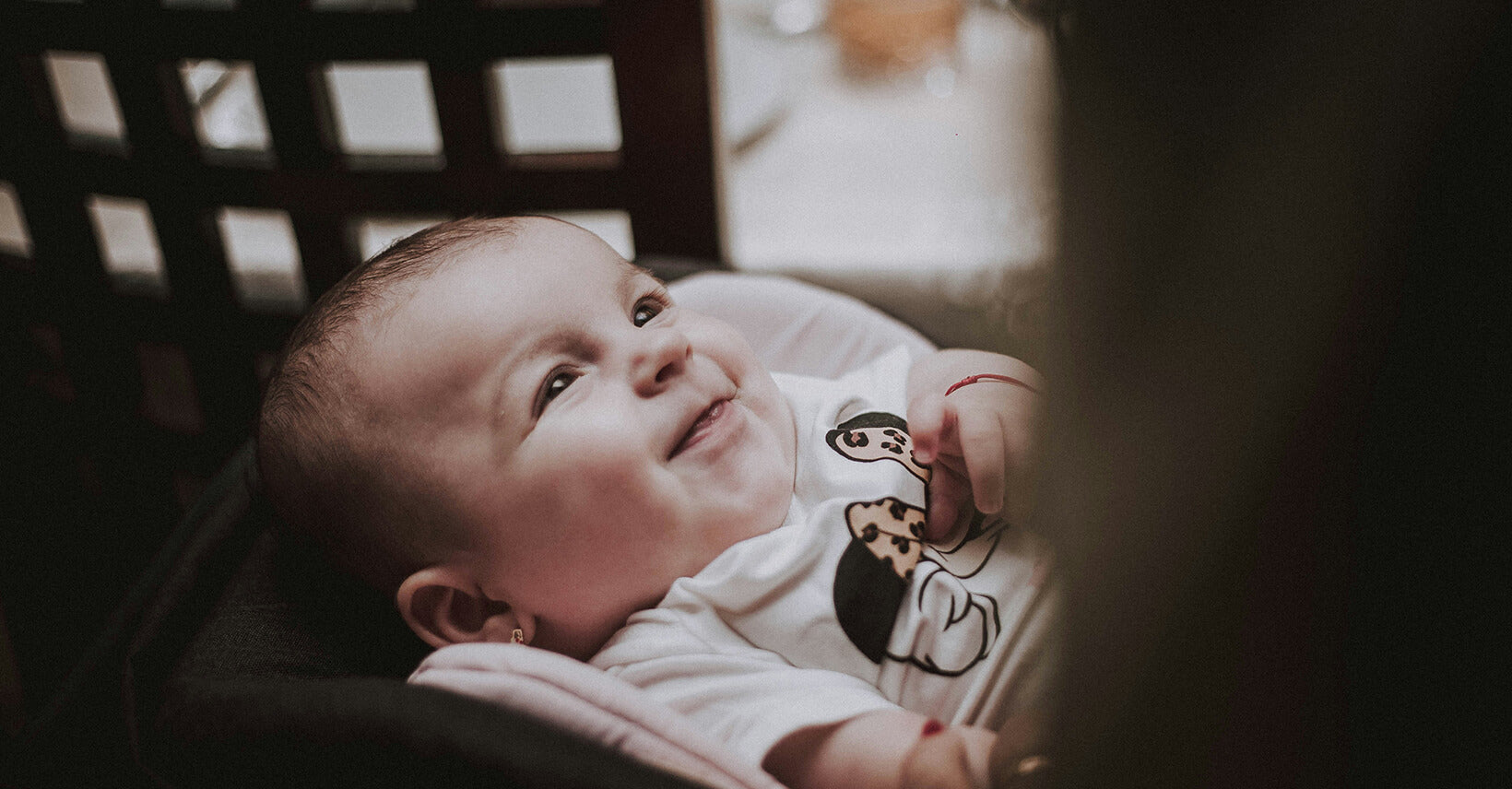


Wrapping babies in swaddles has become a trend. We have learned that some parents would like to wrap their little ones in swaddles. Wrapping a baby tightly is good for keeping him calm and helping him sleep tightly during the first few weeks after birth. How does swaddling work, and when to stop swaddling a newborn baby? Today’s article will focus on these problems. For more information, please kindly read on.
Swaddling is a technique of wrapping the baby in a cloth or blanket, which has a calming effect on the baby. Swaddles can create a familiar, comfortable feeling for babies to let them feel they are still in the womb. The baby's Moro reflex (startle reflex) can be reduced by swaddling. This Moro reflex is innate to every newborn baby. Babies’ arms or legs will suddenly stretch outward, and their fingers will open when they hear a sudden loud noise or shock. The Moro reflex will reflect your baby’s sleep quality. During the sleep phase, infants will often awaken from sleep, and then they will wake up completely and have difficulty falling asleep again.
The modern swaddling is not a new invention, and it is an upgraded version of the traditional swaddling method. In modern times, swaddling is used for calming the newborn baby and helping him to have a comfortable, restful sleep.
On the contrary, ancient people believed that a baby's body needed to be supported and shaped. So a baby needed to be wrapped tightly. But wrapping too tightly is not a good thing for a baby’s growth and development. Gradually, the criticism of this tight wrapping was growing. Finally, this tradition disappeared.
Nowadays, some research has shown that swaddled babies can have longer and more restful sleep. In addition, swaddled infants are much less likely to wake up during sleep suddenly.
Babies will always feel insecure after they leave the womb, which is a familiar environment to them. A sense of safety from birth is very important. Every parent needs to provide a sense of security for their babies. Swaddling newborn babies is one of the most efficient ways that can make them feel secure. Parents wrap their babies in different ways to offer a safe feeling.
SIDS is sudden infant death syndrome. SIDS is one of the chief killers of infants under age one. Some studies show that SIDS is associated with many different reasons. Including sleep position, sleep environment, baby feeding, etc.
Experts suggest promoting babies sleeping on the back to avoid compressing their hearts. Swaddling can help babies sleep in this position to cut the incidence of SIDS.
Babies sleep most of the time. Helping babies have enough good sleep very important. This is closely related to babies’ physical and mental health.
Swaddling provides babies with a secure rest environment from outside. In this way, they can have a longer, more restful sleep easier.
Parents usually feel quite helpless when they face a crying baby. At this time, parents can try to swaddle their babies. Babies always can be comforted by swaddling. That's one of the most effective ways to smooth a crying baby.
Swaddling may compress the babies’ nerves if parents wrap their babies too tightly.
Swaddling your baby in the wrong way may increase the risk of DDH. DDH is a problem with the baby's hip joint forms. Sometimes the DDH starts before birth, and sometimes it happens after birth. It can affect your baby’s hips as he grows.
Wrapping too tightly also may cause the baby to be overheated.
Swaddling can help calm your baby and help him have a restful sleep. But swaddling a baby for too long can make him have an improper position or be overheated, even leading to a risk of SIDS. Parents can use swaddling when their babies are falling asleep. The correct swaddling is essential.
The purpose of swaddling is, first and foremost, to keep your baby calm and to avoid the Moro reflex. We recommend that you can swaddle your baby for the first few weeks after birth. Because the Moro reflex gradually decreases after about two to three months.
As your baby grows, his need for movement increases. In this case, swaddling can limit your baby's movement and hinder his development of a motor function. When your baby wakes up from a long sleep and opens his eyes, it's time to stop swaddling your baby.
A baby sleep sack is a good alternative to swaddling and is recommended for babies after three months of age. After three months, babies can transition from swaddle to sleep sack. Sleep sacks will continue to provide your baby with the feeling of being well protected and also provide him with the freedom of movement.
Which is better? There are advantages and disadvantages to both of them. Next, I will introduce some baby sleep sacks.
There is a highly recommended, reliable supplier of baby clothing(including baby sleep sacks, baby apparel, etc.) - Kaiya Baby. Below are details of typical sleep sacks for your reference:
This versatile sleep sack is sleeveless and one-piece.
This swaddling sleep sack is typical of the fabric choice - bamboo fiber. The properties of raw bamboo fiber are introduced as below:

Lily Hou
An expert in sleep sack design, is a valued contributor to Kaiya Baby's blog. With a strong background in baby sleep bags and maternal care, she is highly regarded for her professionalism. Lily prioritizes baby comfort and safety in her designs, using high-quality materials. Her insightful articles on sleep bags have been featured in reputable publications and have gained a significant readership. Trust Lily to help you create a comfortable and safe sleep environment for your baby, backed by her proven track record in the industry.
Leave a comment
This site is protected by hCaptcha and the hCaptcha Privacy Policy and Terms of Service apply.